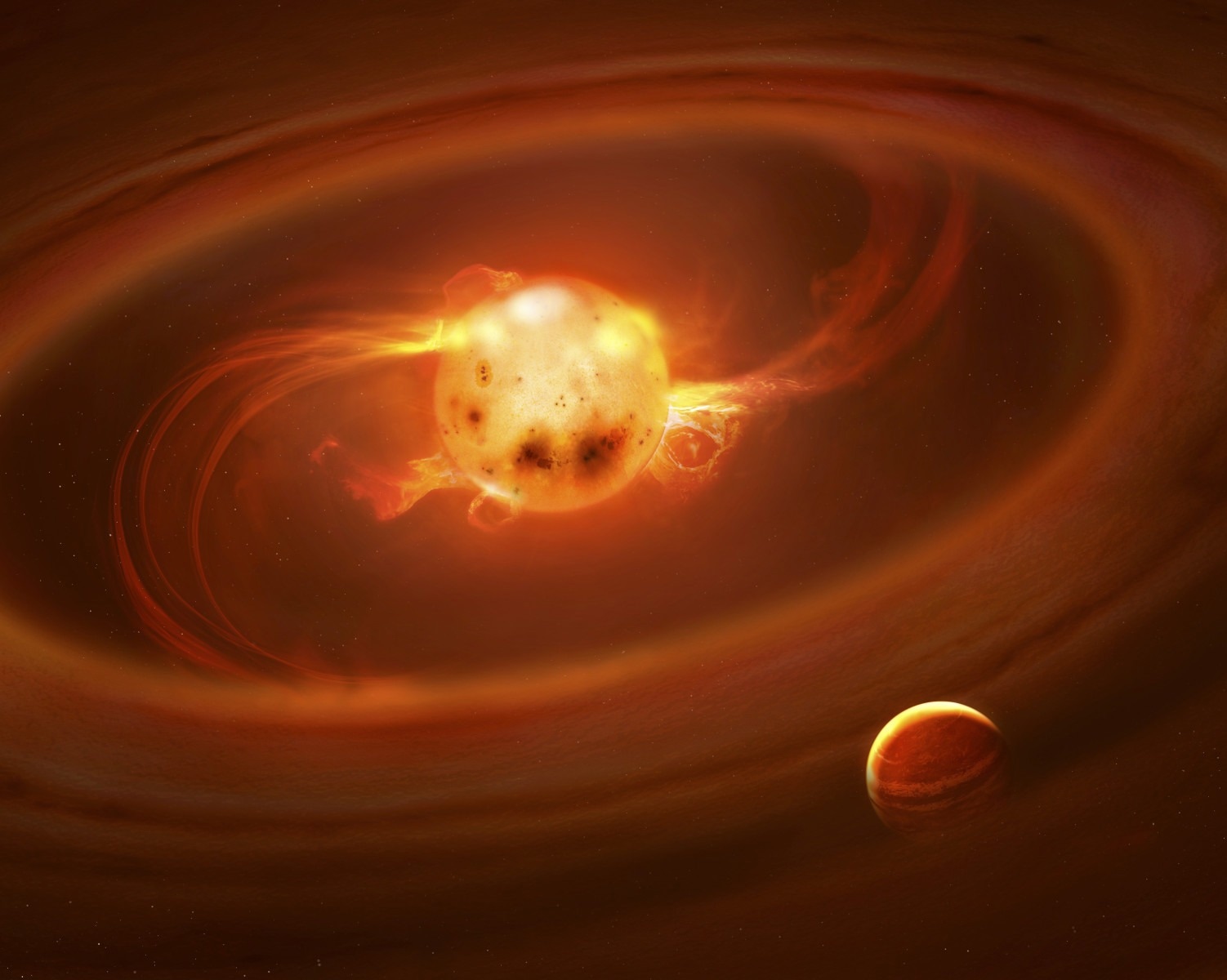Researchers have discovered evidence that some stars have very powerful surface magnetic fields, which calls into question popular theories about how stars evolve.

The study’s findings could significantly impact astronomers’ current understanding of how stars evolve. Image Credit: Getty Images
Surface magnetism in stars like the sun is connected to stellar spin in a manner akin to that of a hand-cranked flashlight. In the center of magnetic sunspot regions, strong magnetic fields are visible, which leads to several space weather phenomena.
Low-mass stars, which are celestial bodies that have a mass less than that of the sun and can rotate either very quickly or relatively slowly, were formerly believed to have very low levels of magnetic activity, which made them the perfect host stars for possibly habitable planets.
In a new study, which was published in The Astrophysical Journal Letters, researchers from The Ohio State University contend that a novel internal mechanism known as core-envelope decoupling, which occurs when a star’s surface and core initially spin at the same rate before drifting apart, could be in charge of enhancing magnetic fields on cool stars.
This process could intensify their radiation for billions of years and have an effect on the habitability of their nearby exoplanets.
Lyra Cao, the study’s lead author and an astronomy graduate student at Ohio State, and Marc Pinsonneault, the study’s co-author and an astronomy professor at Ohio State, created a method earlier this year to measure and characterize star spots and magnetic fields.
Although low-mass stars are the most prevalent stars in the Milky Way and frequently host exoplanets, Cao noted that relatively little is known about them.
For many years, it was believed that lower-mass stars’ physical processes were similar to those of solar-type stars.
Astronomers can employ stellar spins as a tool to comprehend the nature of a star’s physical processes, as well as how they interact with their companions and their environment, since as stars spin down, they gradually lose angular momentum. The star rotation clock does appear to pause occasionally, though, according to Cao.
The scientists discovered that the magnetic fields of the low-mass stars in the vicinity seemed far greater than existing theories could account for by studying a sample of 136 stars in M44, a star crib also known as Praesepe or the Beehive cluster.
One of Cao’s team’s most interesting discoveries was learning that these stars' magnetic fields may be just as unique—significantly greater than expected by existing models. A previous study has already shown that the Beehive cluster is home to several stars that defy conventional ideas of rotational development.
To see a link between the magnetic enhancement and rotational anomalies was incredibly exciting. It indicates that there might be some interesting physics at play here.
Lyra Cao, Study Lead Author and Graduate Student, The Ohio State University
The scientists also proposed that the synchronization of a star’s core and envelope would result in a magnetism present in these stars that would have a fundamentally distinct origin from that of the sun.
“We are finding evidence that there is a different kind of dynamo mechanism driving the magnetism of these stars. This work shows that stellar physics can have surprising implications for other fields,” Cao further added.
The research concludes that these results have significant ramifications for the understanding of astrophysics, particularly in the search for extraterrestrial life.
Cao stated, “Stars experiencing this enhanced magnetism are likely going to be battering their planets with high-energy radiation. This effect is predicted to last for billions of years on some stars, so it’s important to understand what it might do to our ideas of habitability.”
However, these results should not discourage anyone from looking for life outside the solar system. The team’s discovery could provide more light on where to explore planetary systems that can support life with more study.
However, Cao thinks that the findings made by her team might improve star evolution simulations and theoretical models here on Earth.
Cao concluded, “The next thing to do is verify that enhanced magnetism happens on a much larger scale. If we can understand what is going on in the interiors of these stars as they experience shear-enhanced magnetism, it is going to lead the science in a new direction.”
The National Science Foundation, the US Department of Energy Office of Science, and The Alfred P. Sloan Foundation provided funding for the study. Co-authoring with them was Jennifer van Saders from the University of Hawaii.
Journal Reference
Cao, L., et al. (2023) Core-envelope Decoupling Drives Radial Shear Dynamos in Cool Stars. The Astrophysical Journal Letters. doi:10.3847/2041-8213/acd780.